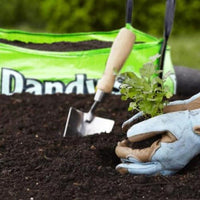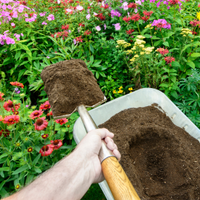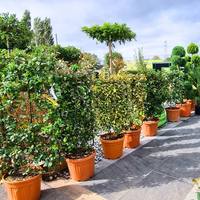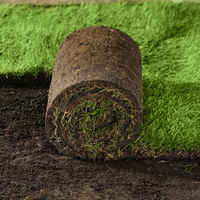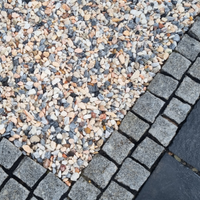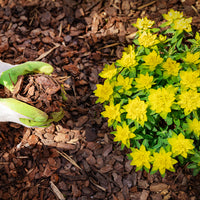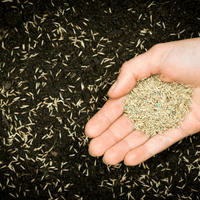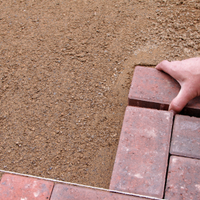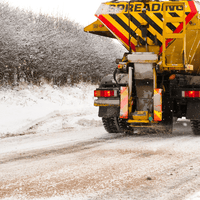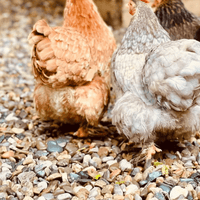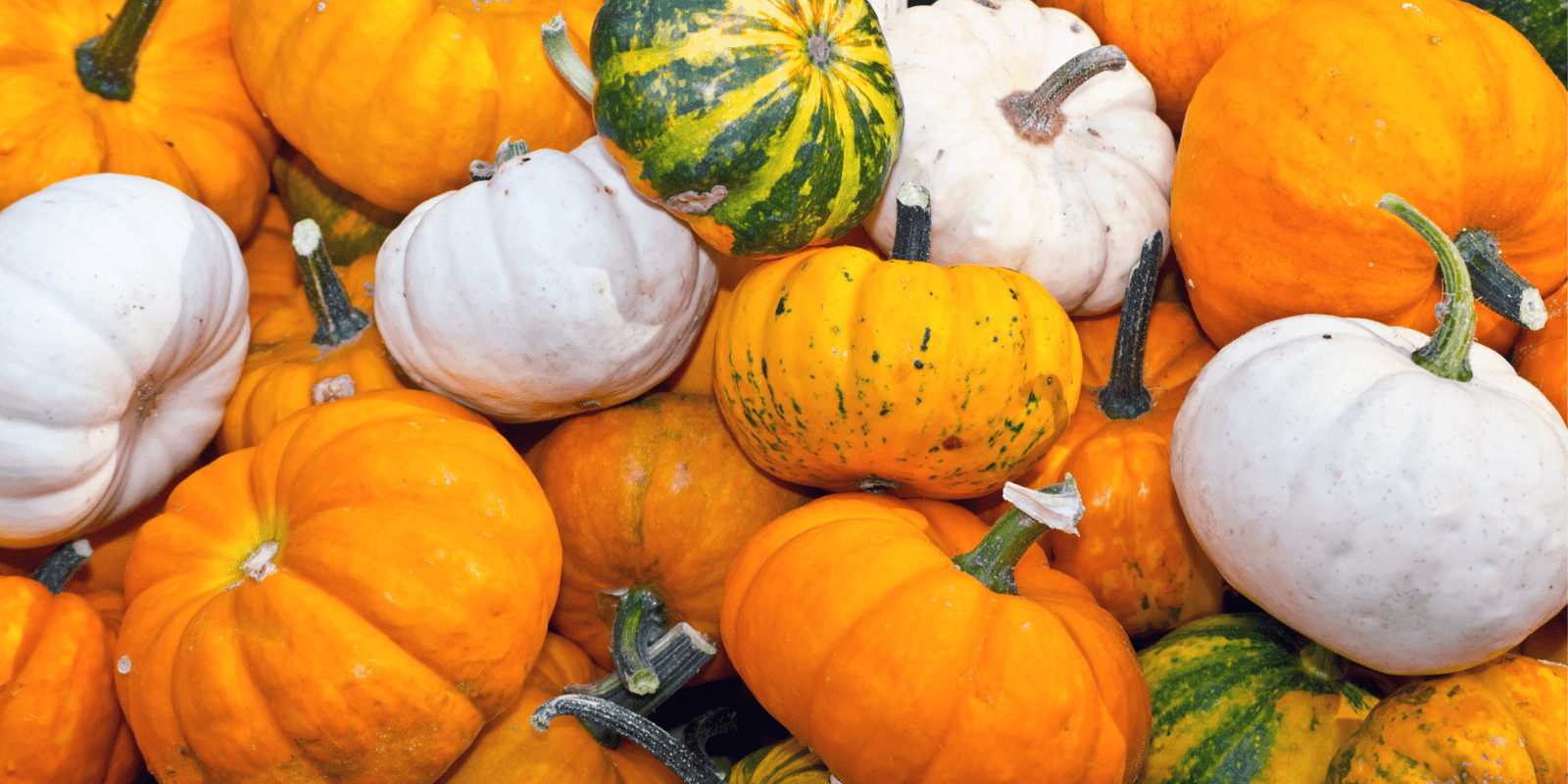There’s something magical about growing your own pumpkins: the anticipation of those orange globes swelling through the summer, the thrill of carving them for Halloween or turning them into a warming soup in autumn. In the UK climate, success comes from good timing, the right variety, proper space and - critically - excellent soil.
That’s where Dandy’s VegeGrow Topsoil comes into its own. In this guide we’ll walk through everything you need to grow pumpkins well, with special focus on how to use VegeGrow Topsoil to give your plants a brilliant start.

Sadly you have missed this year's harvest but you can still prepare for next Halloween by growing your very our pumpkins at home using the seeds from your pumpkin carving, so nothing goes to waste - don't forget to save this blog too!
Why choose VegeGrow Topsoil?
Before getting stuck into sowing and care, let’s highlight why VegeGrow is a strong choice for growing pumpkins.
- VegeGrow is a screened topsoil blended with organic compost, designed specifically for vegetable patches, greenhouses or planters.
- It’s “a light, friable, soil full of nutrients and minerals” - exactly what pumpkin plants love, being “greedy feeders”.
- It’s peat-free (a plus for environmental reasons) and part of a specialist garden range from Dandy’s.
- Our 5 star customer feedback indicates it’s reliable for veggie plots.
So: start with a good base. If you invest in quality topsoil like VegeGrow, the rest of the growing process is that bit more likely to succeed.

Step‐by‐Step: Growing Pumpkins in the UK
1. Choose the right variety
In the UK you’ll want a pumpkin variety suited to the season and your space. The Royal Horticultural Society (RHS) recommends choosing based on size (for carving vs eating) and growth habit (trailing vs bush) so it fits your garden.
If you’re in a smaller garden or container, pick a bush variety; if you’ve got plenty of space, go for a trailingly large type.
2. Prepare the ground (or container)
- Choose a warm, sunny, sheltered spot - pumpkins like warmth and sunlight.
- If you’re using our VegeGrow Topsoil, lay down or incorporate the VegeGrow so your patch is enriched. For example: dig out the area, add a layer of VegeGrow Topsoil and mix into the top ~15-20 cm of ground (or fill a large planter with VegeGrow).
- Ensure good drainage: pumpkins don’t like to sit in water-logged soil. If your garden is susceptible to water-logging ensure you add lots of drainage sand to the mix first.
- Space well: trailing varieties need lots of room; bush types can go in large containers. Space bush types 90 cm apart, trailing types around 1.5 m apart.
3. Sowing & planting
- In the UK climate, you can sow pumpkin seeds outdoors late May / early June (after frost) or sow indoors mid-April and plant out once warm.
- Use a depth of 2.5 cm for outdoor sowing. For indoor sowing, plant in individual pots and harden off before planting out.
- When planting out seedlings (or your own sown plants), ensure the soil is warm and settled. Plant into the enriched VegeGrow area.
- Firm in gently, and water well at planting.
4. Care through the summer
- Water regularly, especially when the fruits start forming. Ensure soil around roots stays moist but not water-logged. We suggest a sunk pot near each plant so you can water deeply.
- Feed: Because pumpkins are heavy feeders, we suggest regularly adding our Multi Purpose Compost or Mushroom Compost to the soil to grow your pumpkins big and healthy.
- Keep the vines under control if space is tight: you might train them, or prune back to one or two fruits if growing compactly.
- Protect from pests and slugs: young plants are vulnerable.
5. Special tips for shape & health
- Place a piece of cardboard or wood under each developing fruit so that the base doesn’t rot where it touches the soil.
- Regularly turn fruits if you want a more even shape (especially if you’re growing for carving). The supplier suggests this for aesthetic pumpkins.
- Ensure the vines have enough space to breathe - crowding encourages fungal diseases.
6. Harvesting & storing
- Harvest when the skin is hard and bright in colour, and when the plant starts to die back. Typically from mid-September for outdoor UK crops.
- Use a sharp knife to cut the fruit from the vine, leaving a good length of stalk if possible - this helps in storage.
- Cure pumpkins (in a warm, dry, frost-free place) for a week or two, then store in a cool, dry, frost-free place for later use or display.
Why the right soil makes a difference for pumpkins
Let’s pull out exactly how our VegeGrow helps:
- Nutritious base – Pumpkin plants demand a lot of nutrients; VegeGrow being compost-blended means that the soil already has a good nutrient and organic matter base.
- Good texture – It's “light, friable” means the soil is easy for roots to penetrate and for drainage to occur, which suits the large root systems of pumpkin plants.
- Peat-free and sustainable – For environmentally conscious gardeners, knowing the topsoil is peat-free ticks a box.
- Flexible for beds or containers – Whether you are planting in a veg patch or a large planter, the product is designed for both.
- Time saved – Starting with a quality soil means less amendment, less guesswork, and fewer catch-ups mid-season.

UK-specific considerations & timing
- In the UK, the key limitation is season length and warmth. Choose a warm, sheltered south-facing spot if possible.
- Use cloches or fleece early on if you sow outdoors and the spring is cold. RHS notes warming soil in advance can help.
- Given our sometimes unpredictable summer weather, having good soil (like VegeGrow) helps buffer against less-than-ideal conditions, because good soil holds nutrients and moisture better.
- If you’re going for Halloween pumpkins, plan sowing so they are mature by late September/early October.

Troubleshooting common problems
- Lots of vines/flowers but no fruit: Could be pollination issues (few bees) or lack of fertiliser. The VegeGrow helps with fertility, but ensure pollinators are present (e.g., sow our wildflower seeds nearby) and you’re not planting in a too-shady spot.
- Rot at the base of pumpkins: Happens if fruit sits on wet soil. Use a card/wood board under the fruit and ensure soil has good drainage.
- Powdery mildew (white powder on leaves): Often from poor air circulation or moisture on leaves. Keep vines spaced, avoid watering from overhead, and ensure soil is not soggy.
- Small fruits: Could be nutrient deficiency or the plant has too many fruits. Thin to one or two per plant if you want big showy pumpkins.
- Delayed ripening: Make sure the skin is hard, the colour is right, and the vine has died back. Cold weather late in the season may slow things – in that case you may need to harvest and cure indoors if frosts approach.

